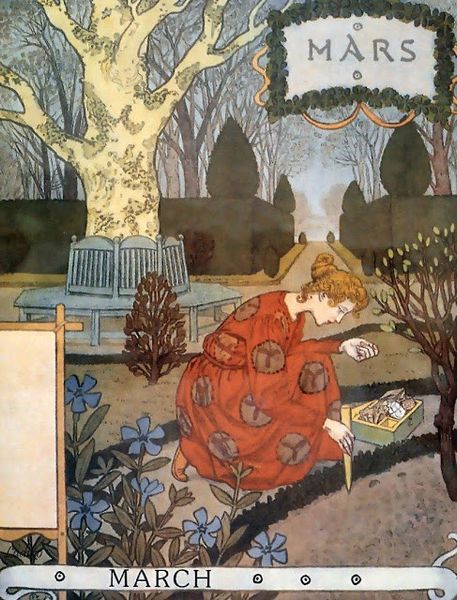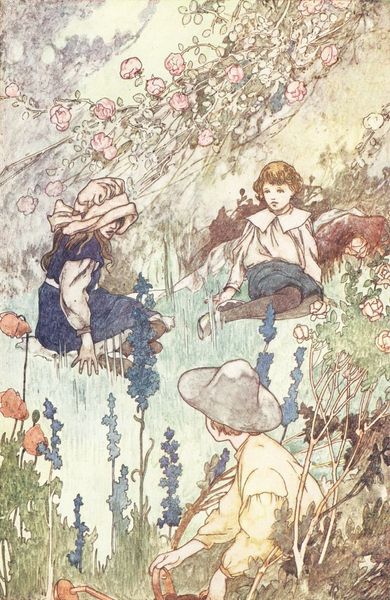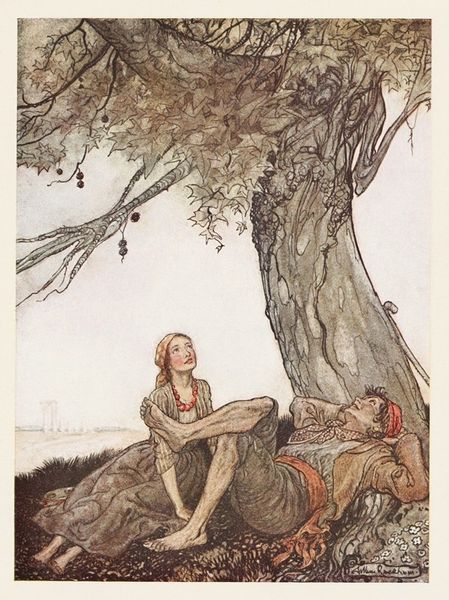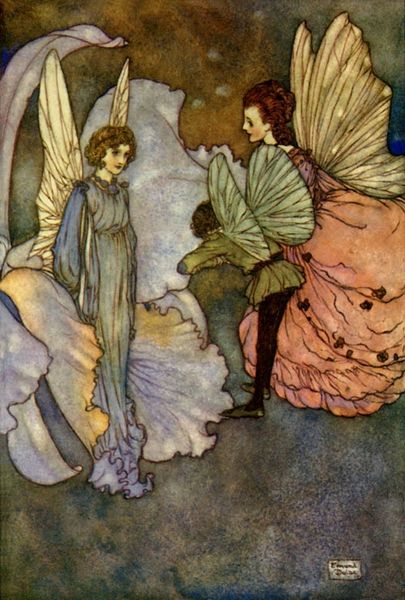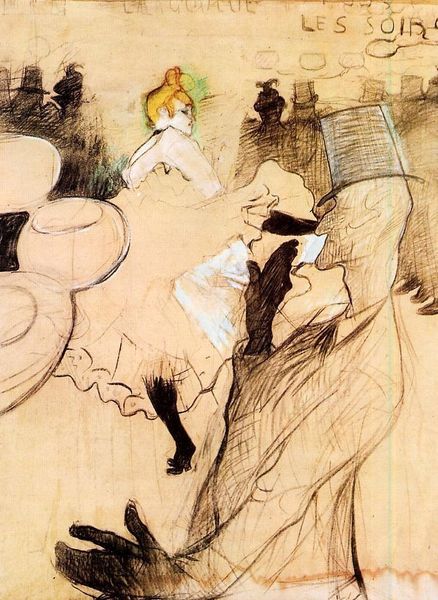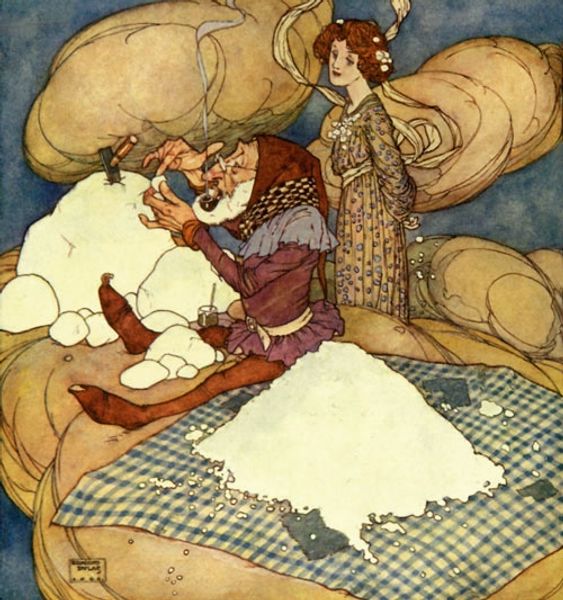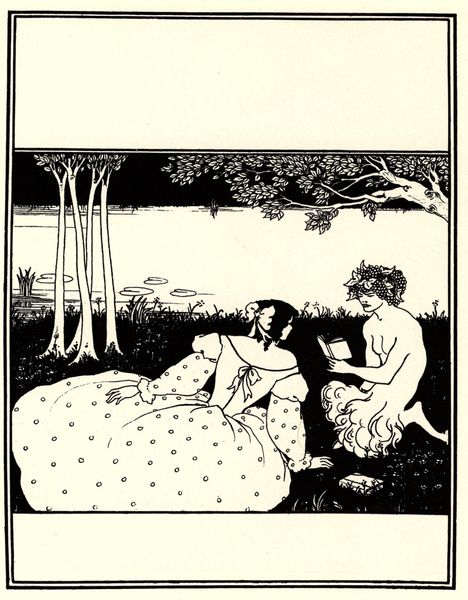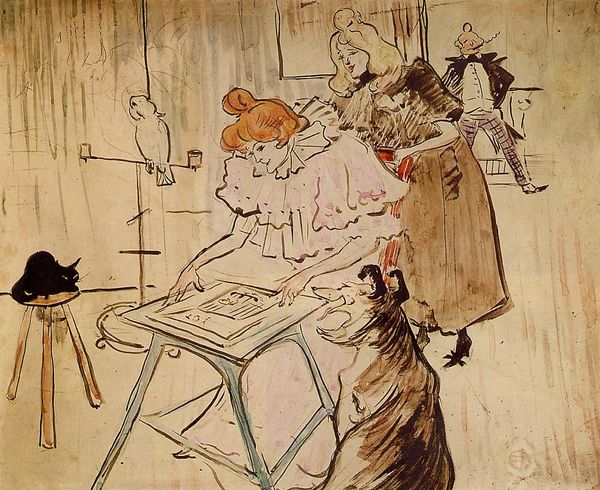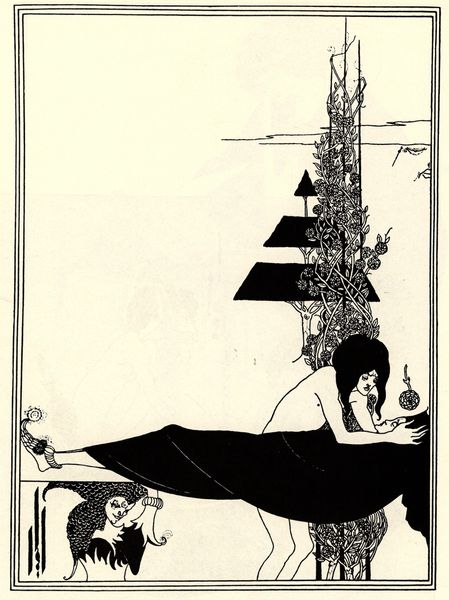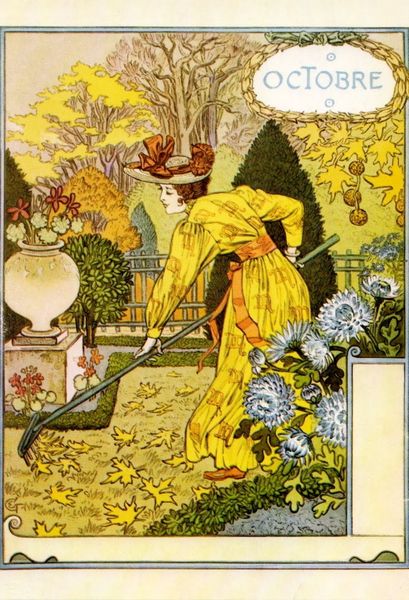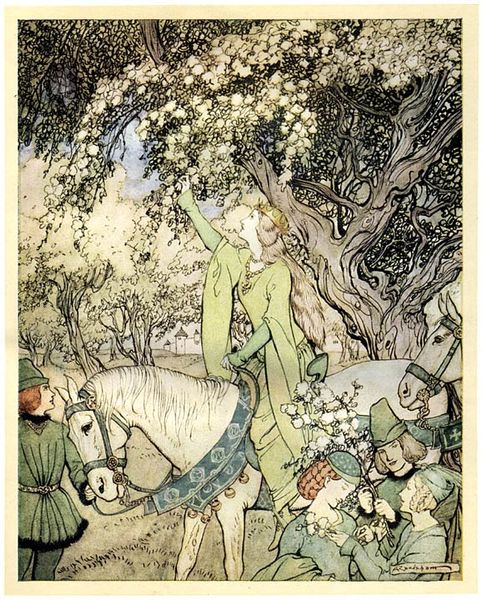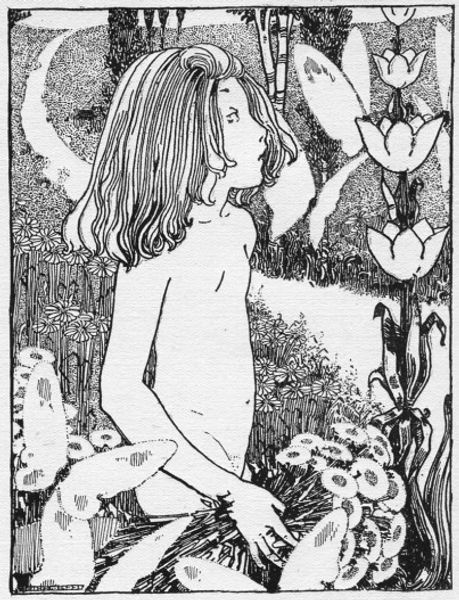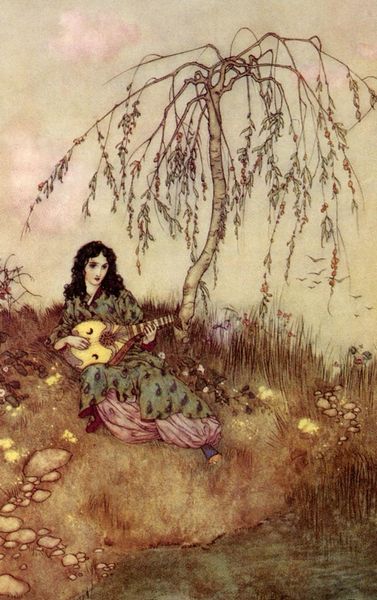
painting, watercolor
#
portrait
#
fairy-painting
#
narrative-art
#
painting
#
watercolor
#
portrait art
#
watercolor
Copyright: Edmund Dulac,Fair Use
Curator: This watercolor by Edmund Dulac, titled "Little Girl in a Book," presents a whimsical illustration. It seems to have been part of a series for his book "Fairies I Have Met." Editor: It immediately strikes me as odd, the scale play. The little girl perched on what looks like an enormous open book... the material reality of that juxtaposition is unsettling. Curator: The portrayal of the little girl, situated within this fantastic scene, speaks volumes about childhood and the narratives that shape identity. Consider the gendered expectations projected onto young girls at the time. This imagery can open up complex discourses of power and innocence, no? Editor: True, but let's not overlook Dulac's craft. Look at the delicacy of the watercolor application, how he builds texture and depth with such a light touch. It elevates this illustration. The ink and the layering must have been a conscious decision in conveying that childlike perspective you mentioned. Curator: Yes, Dulac was undoubtedly skilled, but let's contextualize those skills within the period’s cultural landscape. He illustrates an idyllic fantasy world, but where are the socioeconomic realities for many children during that time, particularly those less privileged? Where are the factory workers and newsies? Editor: I understand your point. But it seems to me this speaks more to a dreamscape than direct societal reflections. If we talk about social labor - who made the paper for the book itself? Who ground the pigments for his paint? Those forgotten labors deserve examination alongside his fantastical depictions. Curator: Precisely. It encourages us to examine both the artwork’s construction and the society constructing the artwork. Perhaps it suggests fairy tales provided an escape, yet even these fantasies reinforce class divides, and cultural biases within the world it represents. Editor: Well said! Reflecting on his production alongside its thematic elements certainly complicates how we consider children’s entertainment as a tangible cultural thing and how the image participates in broader systems of art-making. Thank you for that.
Comments
No comments
Be the first to comment and join the conversation on the ultimate creative platform.
